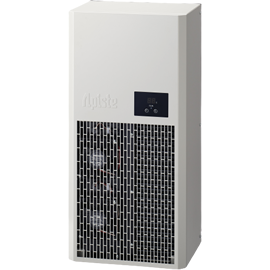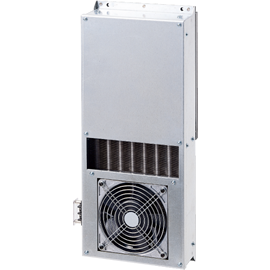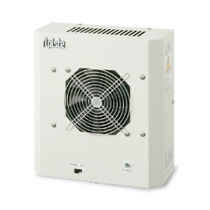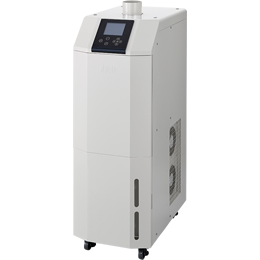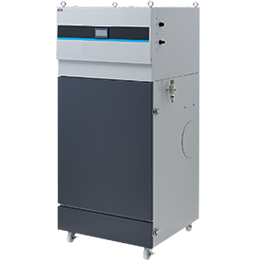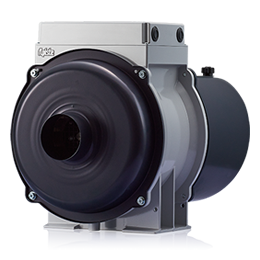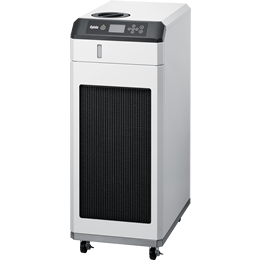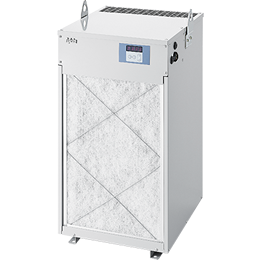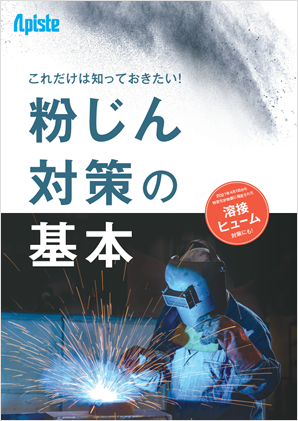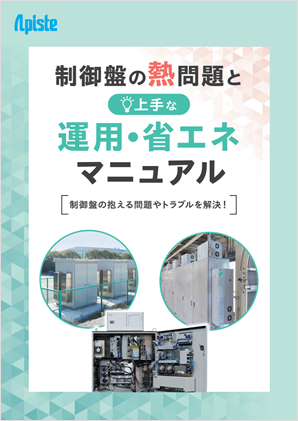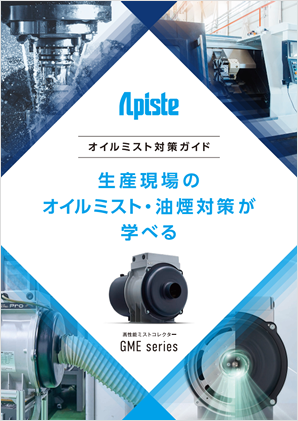Technical Information
1-1. Dust and health problems
What is dust?
Dust is a general term for solid particulate matter suspended in the air, and includes fumes generated during welding work (metal melts and turns into vapor, which then cools and condenses, becoming solid particles suspended in the air). PM2.5, which has become a problem in recent years, is also a type of dust, a type of particulate matter with a particle size of 2.5µm or less (1µm is 1/1,000,000 of a meter). Dust causes air pollution, but it is also generated at factory work sites and during production processes.
Due to the wide variety of work processes and materials handled at workplaces, several types of dust particles with different particle sizes are emitted and suspended in the air. These dust particles can have harmful effects on health when they enter the body through inhalation through the mouth or nose, or when they come into contact with the body. The degree of dust harmfulness, including the occurrence of health problems, the appearance of symptoms, and the rate of progression, is related to four factors: chemical composition, particle size, amount inhaled, and factors on the human body.
Chemical composition of the dust
The air in the workplace may contain chemical substances. Some of these highly toxic substances can cause health problems such as "pneumoconiosis" when inhaled by workers as dust. Highly toxic chemical substances such as manganese and welding fumes are designated as specified chemical substances, but even dust containing very small amounts of these substances or less harmful chemical substances can cause health problems if inhaled in large quantities over a long period of time.
Dust can be divided into "inorganic dust" made up of inorganic substances such as minerals, and "organic dust" made up of organic matter of biological origin such as pollen and bacteria. It is generally believed that "inorganic dust" causes health problems such as "pneumoconiosis." However, "organic dust" can also cause health problems such as allergies.
Dust particle size
The degree of health damage also varies depending on the particle size of the dust. Larger particles of inhaled dust are expelled from the body through sputum or sneezing by the cilia in the nasal passages and bronchi, but finer particles such as welding fumes are more difficult to expel and can reach deep into the lungs, where they can remain and cause diseases such as pneumoconiosis.

Amount of dust inhaled and factors related to the human body
Generally, the more dust is inhaled, the greater the impact on health. However, the degree of health damage varies depending on three factors: chemical composition, particle size, and factors on the human body, such as the type and size of the dust and the health condition of the person exposed to it.
For example, even if people inhale dust under the same conditions, the occurrence and severity of health problems will vary from person to person. It is known that factors such as gender, age, constitution, lifestyle, and health condition have an impact on this. Diseases caused by organic dust are also thought to be largely influenced by factors on the human body, and "occupational asthma" only occurs in people who are hypersensitive to certain components contained in the dust. It is also believed that the occurrence and severity of "pneumoconiosis" also vary from person to person.

Mechanism of dust-related diseases
Dust is mainly inhaled through the nose, and most of it is expelled from the body with exhaled air, but some is deposited in the respiratory tract. Dust with particularly small particle diameters reaches the trachea and bronchi, or even the alveoli at the end of the respiratory tract, where it is deposited in large proportions. On the other hand, dust with large particle diameters is deposited in the nasal cavity and does not penetrate further inside.
It is said that deposited dust is gradually removed by the body's cleansing function, but some dust is not removed and remains deposited in the trachea, bronchi, and alveoli. The components contained in the dust can dissolve into body fluids such as blood and cause symptoms of poisoning, or the deposition can cause inflammation, leading to tissue fibrosis and the development of "pneumoconiosis."
Pneumoconiosis is a general term for lung diseases caused by the accumulation of dust in the lungs, and once contracted, it is an incurable disease.

Next item: 1-2. Dust suppression methods
People who viewed this page also checked out these documents:
Inquiry
For product inquiries, quote requests, etc.
Please feel free to contact us.


